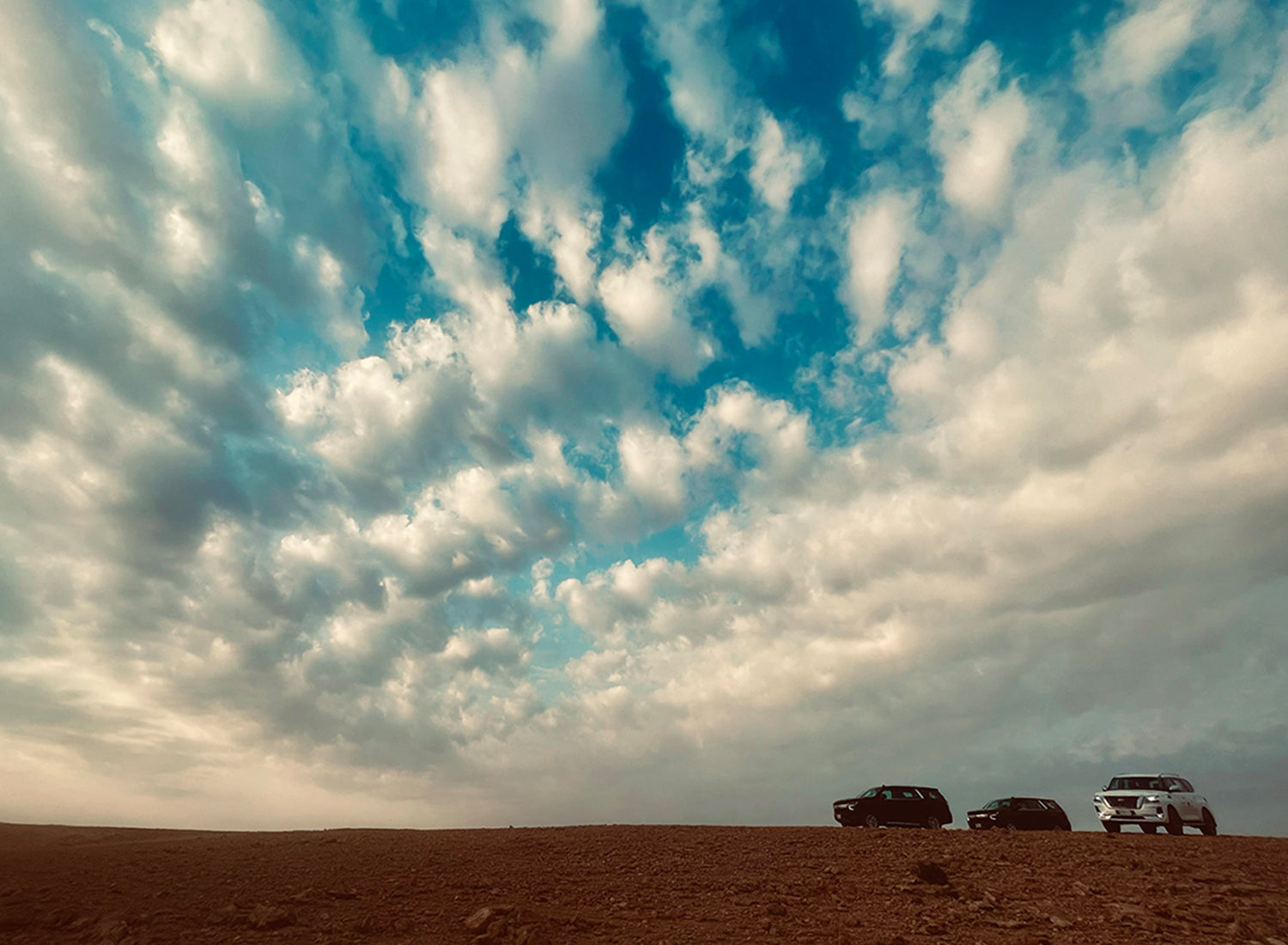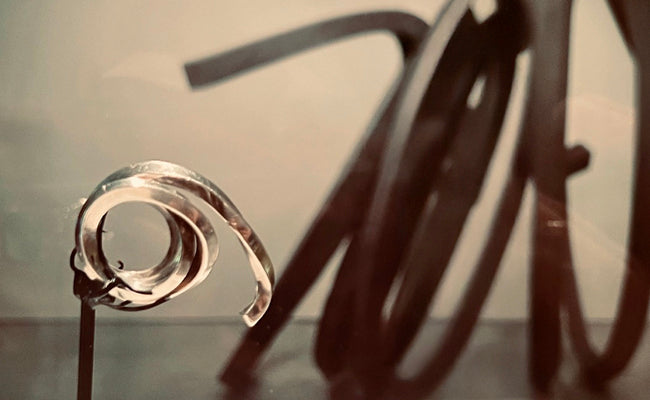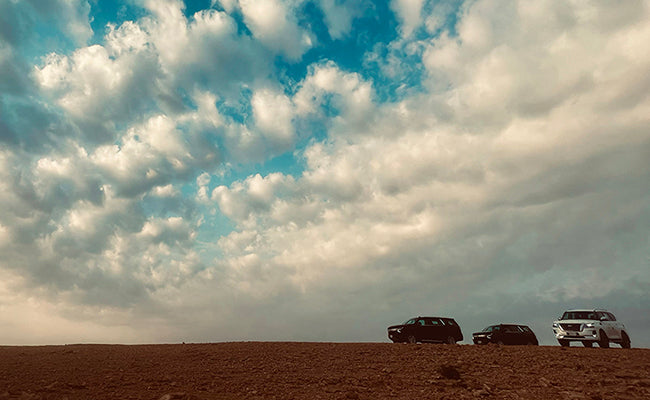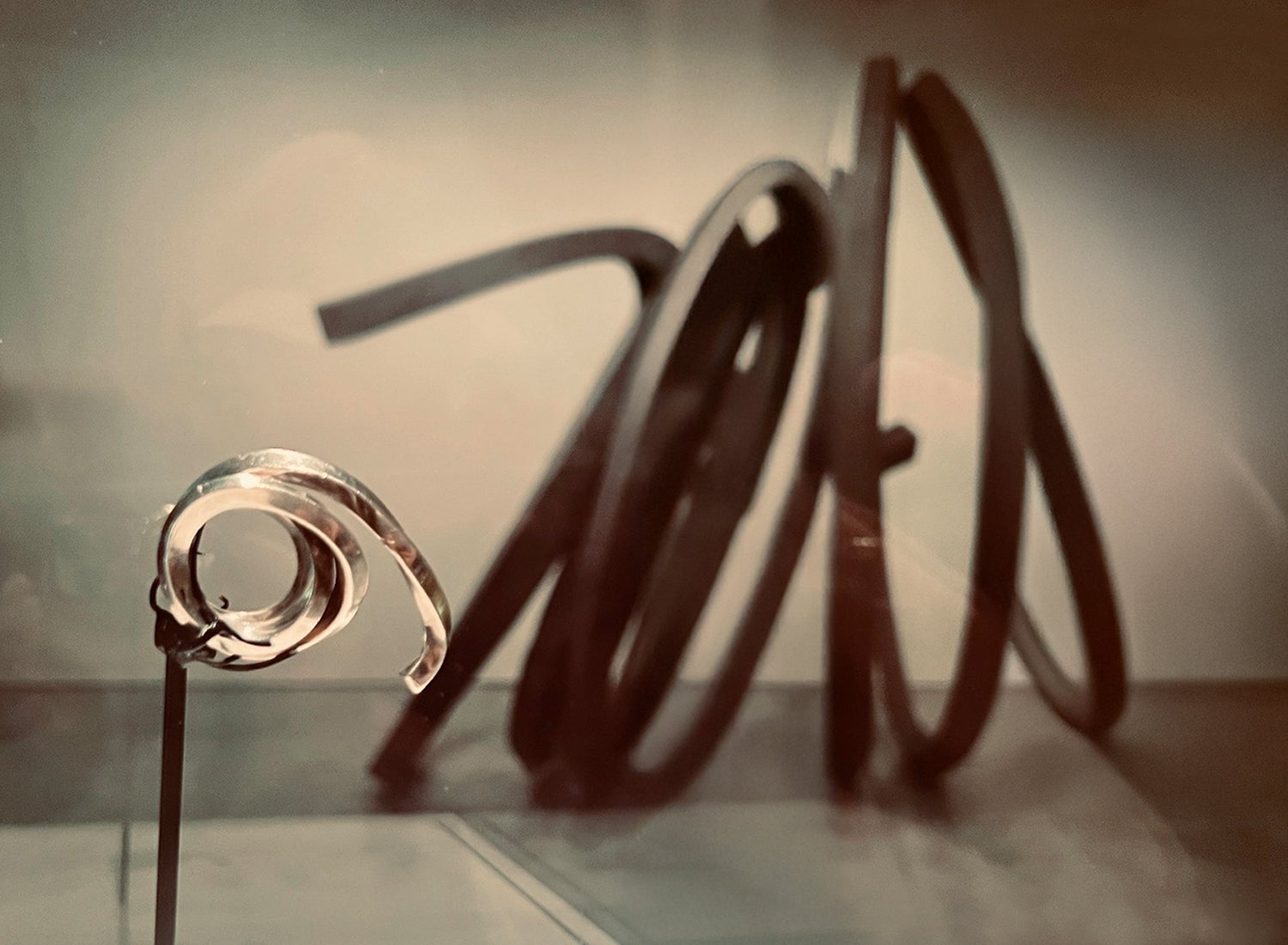
What the Edge of the World Reminded Me About Jewelry’s Deepest Origins
Before the sun rose over Riyadh, I was already layered in my abaya, with a camera slung over one shoulder, snacks packed, and more scarves than I’d ever need. The air was cold in the early dark, and we were in for the full spectrum: a trek from sunrise to sunset, with plans to explore caves after nightfall. I was heading deep into the desert on a journey that felt equal parts adventure and quiet pilgrimage to reach the Edge of the World.
Yes, that’s really what it’s called.
Locals call it Jebel Fihrayn (جبل فهرين), a towering cliff at the end of a vast limestone ridge, part of a larger formation called the Tuwaiq Escarpment. The land drops off so suddenly that the horizon disappears. To most visitors, it's simply the Edge, a place that lives up to its name with a kind of quiet grandeur. The name sounds mythic. The feeling is exactly that... like standing at the edge of time.
The drive out was surreal in its own way. Leaving from the Al Faisaliyah district in Saudi Arabia’s capital, we cruised past glass-fronted boutiques: Cartier, Gucci, Balenciaga... all gleaming in the early morning sun.

RIYADH SKYLINE, GUCCI FLAGSHIP IN THE AL FAISALIAH DISTRICT. PHOTOS: ©ALLOYALIST
Just beyond them, cranes hovered over half-built towers. Riyadh is growing fast, and I could literally see the city rising in real time. Then, gradually, the skyline gave way to small towns and eventually, open desert. I found myself on a route once used by caravans transporting gems and precious metals centuries ago. We shifted from luxury fashion to the landscape of ancient trade in just a matter of hours.



SADUS, SAUDI ARABIA - THE LAST TOWN BEFORE REACHING THE TUWAIQ PLATEAU. PHOTOS: ©ALLOYALIST
After miles of highway, we pulled into a rest stop to refuel and switch to 4x4s for what’s known as desert bashing, an adrenaline-filled drive through shifting sand trails, dry wadis, and wind-carved dunes. We left clouds of dust in our wake, crossing miles of barren terrain that seemed to stretch endlessly in every direction.
At one point, we stopped to help a stranded French motorcyclist who had ridden across continents to get there. While our guides helped get his bike going again, he quietly shared that he’d been seeing a girl, dressed in white and blue layers, following him through the desert for days. Haunted, he said. That’s a whole other story, though.



ACACIA VALLEY TO THE WADI HANIFAH. PHOTOS: ©ALLOYALIST
Desert Bones and Ancient Trade
We kept going, deeper into a landscape with no markers and no signal. Just wind, dust, and the fading illusion that GPS could save us. Our guides never hesitated. I, on the other hand, realized just how dependent I’ve become on searching for a blue dot on a screen.
After a series of whoos, whas, and a few moments that had us bracing across deep ravines and narrow rock shelves, we finally came to a stop. Getting out of the trucks was like stepping back onto solid ground after being tossed around at sea. It felt like we’d been driving on two wheels for half the time, and that’s not a complaint. We took a moment to find our footing on land, then began hiking the steep rock formations.

 OUR MODERN CARAVANS IN THE NADJ DESERT. PHOTO: ©ALLOYALIST
OUR MODERN CARAVANS IN THE NADJ DESERT. PHOTO: ©ALLOYALIST
As I climbed, I thought about what once moved through this unforgiving terrain: ancient convoys loaded not only with frankincense and myrrh, but also with gold, silver, and gemstones. Luxuries that linked Arabia to empires far beyond. This region lies along tributary routes of the famed Frankincense Trail, a sprawling network that connected southern Arabia to Egypt, the Levant, and Mesopotamia. The trail dates back to at least 1,000 BCE, with peak activity between the 3rd century BCE and 2nd century CE. While incense was the star commodity, these caravans often carried a mix of high-value goods, including metals and stones sourced from Arabia, Africa, and even India. The route flourished during the Nabataean, Sabaean, and Roman periods, when trade fueled temples, markets, and imperial treasuries. By the 3rd or 4th century CE, the overland trade began to decline with the rise of maritime routes and shifting regional powers.


HIKE TO THE EDGE OF THE WORLD AND THE FORMER FRANKINCENSE TRAIL. PHOTO: ©ALLOYALIST
Though the Edge of the World wasn’t a known settlement, it served as a natural guidepost for traders crossing the central Arabian plateau. It’s humbling to imagine that gold, lapis, garnet, and carnelian may have once passed beneath my feet. These were stones that were mined, traded, and cut using the tools of their time, then carried across vast deserts to distant markets. Some of those very same stones (or their cousins from along this ancient route) are the materials I now work with at the bench. My team and I shape them, reset them, and give them new life. But their journey began long before us, moving through deserts, cultures, and time.



IF YOU SQUINT, YOU CAN SPOT OUR 4X4'S ON THE TOP PHOTO, PARKED ON THE SECOND PEAK. BOTTOM: THE EDGE OF THE WORLD AND VIEW OF THE FORMER FRANKINCENSE TRAIL. PHOTOS: ©ALLOYALIST
Jewels in the Rocks
Geologically, the Edge of the World is what remains of an ancient seabed, layered in limestone and fossilized coral. This region speaks to millions of years of sediment, pressure, and quiet transformation. The rock formed when the area was covered by a body of water between 50 to 100 million years ago. Over time, it dried up, and acidic rainwater percolated through cracks in the limestone, gradually dissolving it to create dramatic karst formations: caves, sinkholes, and underground tunnels.


THE EDGE OF THE WORLD. IF YOU WERE STANDING ON THAT RIDGE TO THE RIGHT, YOU WOULD BE A SMALL DOT. PHOTO: ©ALLOYALIST
That evening, we explored a nearby cave filled with what I believe were speleothems, specifically stalactites and gypsum crystals, formed as mineral-rich water slowly deposited layer upon layer inside the cave. The structures glittered in our flashlight beams, catching on edges like raw, uncut stones. And yes, bats hung sleepily from the ceiling, adding a little gothic drama to the whole scene.

INSIDE THE BAT CAVE. PHOTOS: ©ALLOYALIST
Amazing to think these formations took thousands of years to develop, as mineral-rich water dripped and evaporated, leaving behind delicate towers of calcium carbonate. Gypsum crystals, often white or transparent, formed in dry conditions when evaporated water left concentrated mineral deposits behind. We saw rippling sheets of calcite known as flowstones or curtains, draped like fabric across the cave walls. In some places, we found rare pockets of microcrystalline quartz developed through older and more concentrated water flows.

LIGHT BEHIND A CALCITE FORMATION. PHOTO: ©ALLOYALIST
If you could excavate even deeper beneath the cave, you’d encounter more layers of compacted limestone, followed by rich sediment that was preserved through the ages, and quiet evidence that this desert was once an ocean floor. Fossils of mollusks and sea urchins are often found embedded in the stones of surrounding caves, as we were told, still intact after millions of years. And while rare in these more remote caves, some have revealed archaeological traces: pottery shards, tools, or subtle signs of early human life.
This cave was untouched, never excavated, never shaped by human hands. It had formed on its own through the centuries, and now belonged to a quieter kind of resident: the aforementioned colonies of bats that were nestled deep in the darkness above. It was the kind of silence that felt more like a warning than an invitation (though that might just be the city girl in me talking). I’m claustrophobic as it is, so stepping into a dark, echoing space was already pushing my limits. Add to that the fact that I’ve been irrationally afraid of bats ever since watching too many Blade movies growing up, and I was a bit on edge. I moved carefully, doing everything in my power not to sneeze, kick a rock, or make a sound. It felt like a small act of respect to let them sleep, and a bigger act of self-preservation.


SILENTLY SPELUNKING THE SPELEOTHEM FEELS LIKE THE APPROPRIATE NERD CAPTION. PHOTOS: ©ALLOYALIST
Jewelry's Deepest Origins
As someone who works with antique and custom jewelry, I’m used to handling objects that have long outlived their original owners. But standing there reminded me that the meaningful origins of jewelry aren’t only cultural, they’re geological. Beauty doesn’t begin at the surface. It forms deep underground, in silence, under pressure, slowly taking shape long before it ever meets the eye. Every gem, every gold band I touch began that way, shaped over millennia, long before we arrived.
These lands weren’t just passageways for people; they were conduits for the very materials I now work with in my studio. That legacy of formation, discovery, movement, and meaning, is something I hold close. It’s part of the story behind every piece I create and recreate.
Just before we made our way back, we noticed a few small fires flickering in the distance. Unexpected in such a remote, barren landscape. Our guides pulled over without hesitation and put them out one by one, moving with the kind of calm that suggested this wasn’t the first time. When we asked what they were, one of them offered a simple explanation: “The desert is haunted.”
He told us about a recurring story for those who have been through the Nadj. A girl dressed in white and blue, spotted lighting fires in the desert and following visitors throughout the night. Some say she guides travelers. Others say she warns them. No one knows for sure. But the fires are always put out, just in case.
There were no footprints. No people. Just fire, sand, and a stretch of silence. Tall tale or not, it was a fitting end to a place that already felt like the edge of the mortal world.

PUTTING OUT FIRES WHILE LEAVING TUWAIQ ESCARPMENT. PHOTO: ©ALLOYALIST
When To Go and How to Get There
We visited the Edge of the World with a reputable guide arranged through our hotel, Al Faisaliah in Riyadh, and they were fantastic. A 4x4 is essential, and having experienced guides who undoubtedly knew the terrain (without Google) made all the difference.
As for timing, avoid the scorching summer months. The best time to go is from October through March, when temperatures are cooler and the light is especially beautiful. I re-worked this piece (originally written in January of 2023), which was a great time of year to visit. The desert wasn't a mega tourist destination like the Grand Canyon (yet)... all part of its magic. During my stay, the attraction was nearly empty... just endless cliffs, silence, and sky. So if it's on your radar, go soon, before the rest of the world catches on.






Leave a comment
This site is protected by hCaptcha and the hCaptcha Privacy Policy and Terms of Service apply.